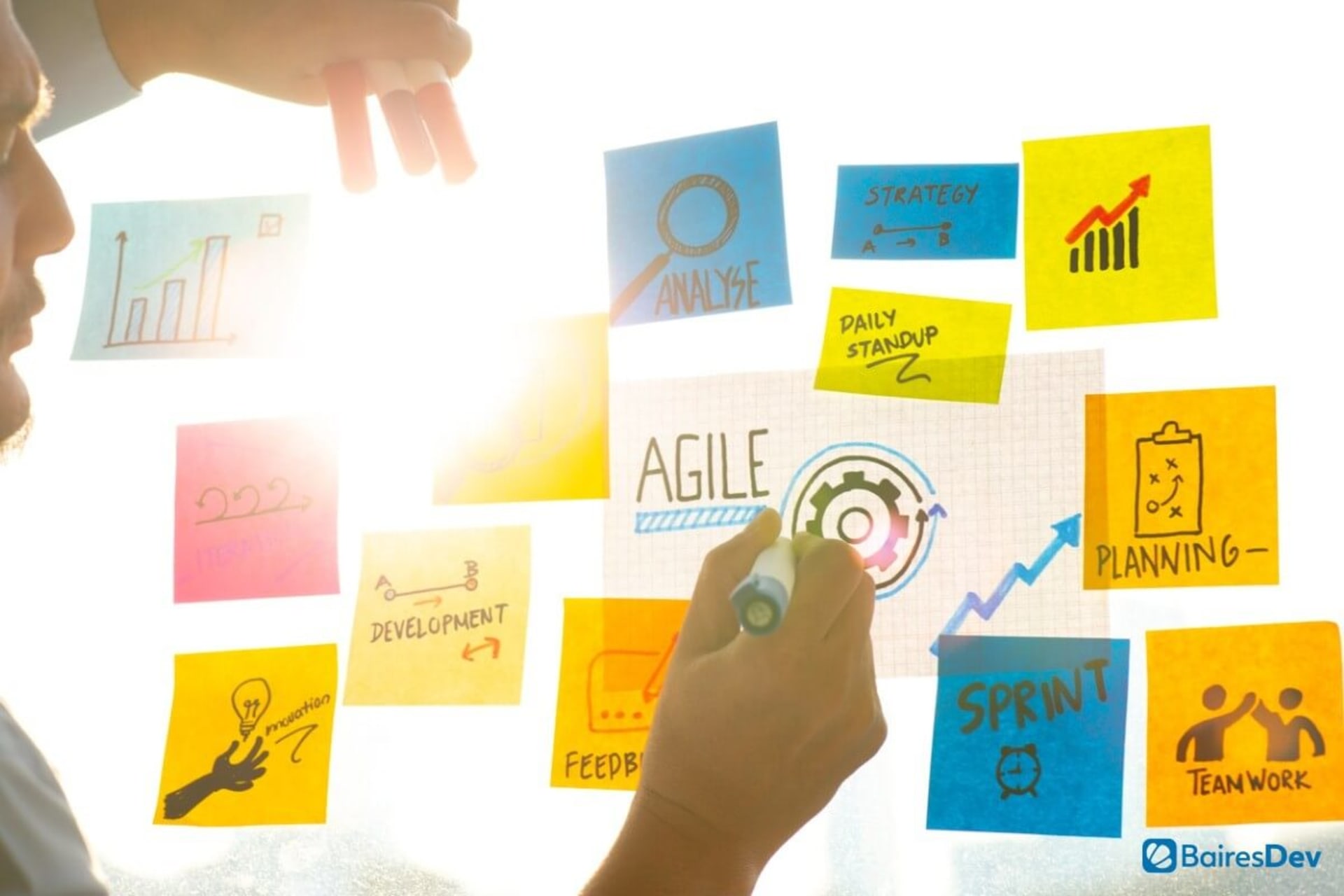This article is part of our Distributed Enterprises Series
We’re now a little over the halfway point of our Distributed Enterprises Series. Together, we’ve covered in detail the ins and outs of the model, starting with an understanding of what it actually means and diving deep into its several advantages and most commonly known challenges.
As we reach the end of our in-depth exploration of the distributed model, we turn our attention towards a combination that’s becoming increasingly common these days: distributed enterprises and agile methodologies.
What is Agile
Before we get into how Agile and the distributed model can make a really productive pair, let’s take a look at what Agile actually is and why it’s been so widely adopted in so many successful companies. First of all, it’s essential to understand that Agile is a state of mind. It’s a methodology that permeates the corporate culture and orientates how to handle processes and tackle tasks.
Lately, Agile adoption is as wide as it has ever been. According to the 15th State of Agile report, a survey sponsored by Digital.ai, Agile usage among software development companies went from 37% in 2020 to 86% in 2021.
The Agile philosophy is based on a manifesto and the 12 principles derived from it. These include having client satisfaction as the highest priority, frequently delivering working software, prioritizing face-to-face conversations in a development team, exercising continuous attention to technical excellence, and measuring progress by the delivery of working software.
All of these propositions regulate an attitude that, as the name says, strives for agility, effectiveness, and efficiency. All that makes it ideal for the modern world of software development.
Strategies for Distributed Enterprises
If you’ve had the opportunity to read through the principles of Agile, you may have noticed that some of them seem incongruent with the core notion of distributed enterprises. After all, principle number 6, for instance, talks about the importance of face-to-face interaction.
How is it, then, that so many companies that adopted a distributed approach are leveraging the benefits of Agile as their primary mindset for everyday activities? Well, there are a few strategies that we can employ that can make this marriage a success while softly adapting Agile’s traditional way of doing things.
Assemble Complete Teams
One of the most profitable ways to leverage Agile methodologies is to ensure the teams are autonomous and self-sufficient. This means making sure that every role in the software development process is contemplated and carried out by one or more specialized individuals. This is even more important when we’re talking about a distributed team since each member will autonomously bring their contribution to the project.
Something also important to keep in mind is striving for time zone alignment. Since the distributed staff will work collaboratively, having many (if not all) team members in the same time zone will greatly benefit the process and facilitate communication, something critical for any distributed team.
Use Cloud-based Tools
Collaboration is at the heart of Agile methodologies. However, employees of a company that works under a distributed strategy don’t have the opportunity to go over to a colleague’s desk and hover over providing feedback on the work that’s being done. That is why it’s paramount to invest in a cloud-based suite that all of your team members can use simultaneously.
Taking advantage of the collaboration features that are available in so many of these applications, distributed and remote staff can work simultaneously on the same projects, seamlessly conduct Agile sprints, have a clear and broad view of each other’s work, and provide real-time valuable feedback to improve and strengthen what is being created collectively.
Prioritize Communication
Needless to say, communication is one of the main requirements for the successful use of distributed models. This becomes even more important when teams work with Agile methodologies. A traditional remote team will have no issues conducting weekly status meetings and leaving the rest of the time for each member to tackle its own tasks. That can change when Agile joins the party.
The whole idea of Agile is leveraging collaboration, and that can only be achieved through constant communication. I’m not saying your staff will need to spend the whole workday on a Zoom meeting, screen sharing while writing and debugging code. They will, however, need to touch base more frequently than a traditional team, not only for status updates and sprints but also for checking each other’s work and finalizing deliveries.
Remember that one of the principles of Agile is frequent deliveries so that the client can be involved in the process and can better visualize what’s being developed. That in itself already requires your teams to meet more frequently than for the traditional status meetings.
Measure Productivity
Each team and each company have their own way of doing things, and sometimes Agile methodologies simply don’t work for a specific group. If that’s your case, don’t worry. After all, there’s no one-size-fits-all approach to anything business-related. If you’re thinking about implementing Agile in your organization or team, it’s important to determine a set of standards you can use to evaluate how effective it actually is for you.
Measure your output so that you can stay on top of everything and adjust accordingly. Whether in terms of projects completed, finished products delivered, or any other key performance metrics you deem most important, always keep track of your team’s work.
More related articles on our Distributed Enterprises Series







